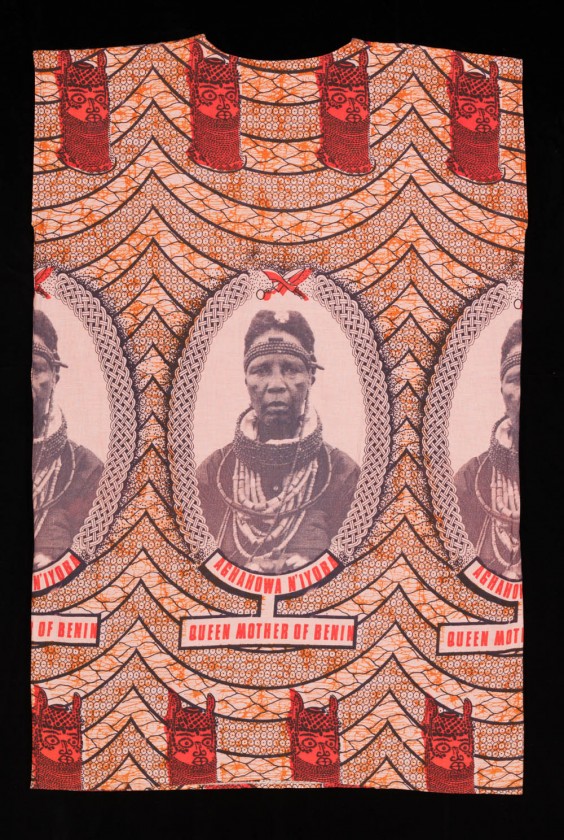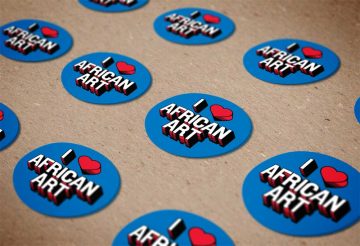Home | History of Benin | Early Photography in Nigeria | S.O. Alonge: The Early Years | Ideal Studio, Benin City | Picturing a New Society | Ideal Studio Portraits | Ideal Studio Setting | Royal Court Photography | Commemorative Objects
Factory-printed cloths were introduced into Africa from Europe in the 19th century. Early fabrics were based on Indonesian batiks copied by the Dutch; thus, the common use of the term “Dutch wax prints” or véritable Hollandais.
The 1920s and 1930s saw the introduction of “fancy fabrics” or imitation wax fabrics produced industrially through the printing process and nowadays printed digitally. These cotton fabrics consist of large blocks of bright color and intricate designs, often with photographic imagery on one side. Fancy fabrics are quickly produced and sold for mass consumption. They are worn on special occasions like coronations, weddings, and funerals.
In the 1950s and 1960s, as African nations achieved independence, fancy prints produced with photographs of political leaders and traditional rulers quickly became historical documents of an important and exciting time in African history. Alonge’s photograph of Oba Akenzua II at his official coronation in 1933 was reproduced on commemorative cloths worn in 1979. The official coronation photo of Oba Erediauwa I by Alonge appeared on fancy fabrics worn at the oba‘s coronation in 1979, and Alonge’s photographs of the queen mother were seen on textiles in the early 1980s.
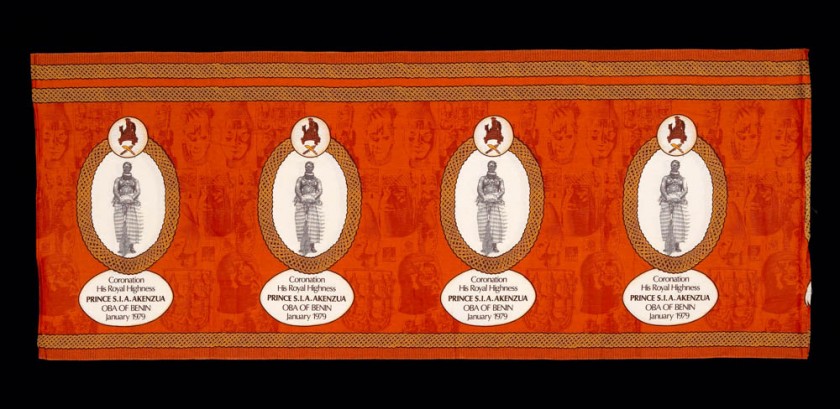
Commemorative cloth with coronation image of Prince Edu Akenzua
1978–79
Cotton
541 x 107.3 cm (213 x 42 1/4 in.)
Gift of Flora Edouwaye S. Kaplan, 2004-10-6
In 2009, a fancy print cloth with Alonge’s coronation photograph of Oba Erediauwa I was created to commemorate his 30-year reign.
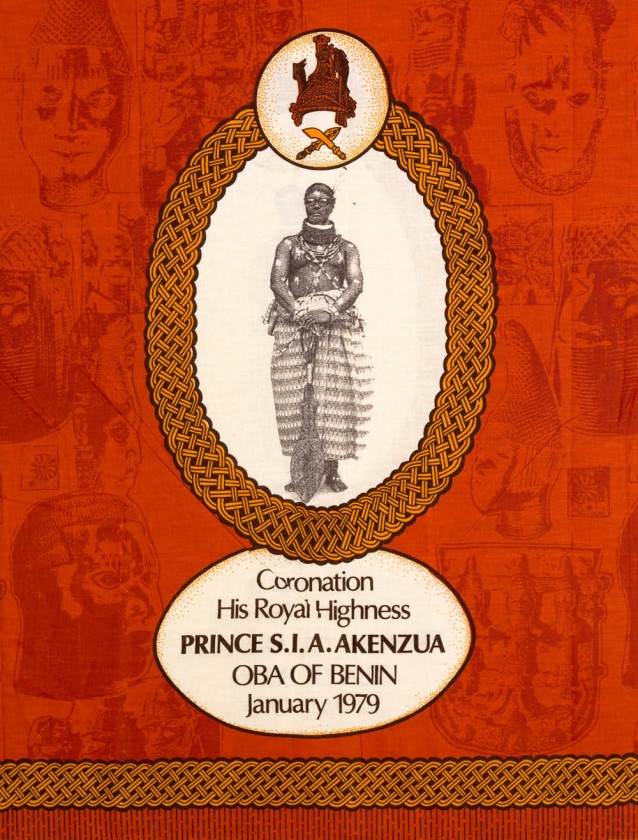
Commemorative cloth with coronation image of Prince Edu Akenzua
1978–79
Cotton
541 x 107.3 cm (213 x 42 1/4 in.)
Gift of Flora Edouwaye S. Kaplan, 2004-10-6
Queen Mothers
The title iyoba, or queen mother, was created by Oba Esigie (reign c. 1504–50) for his mother Queen Idia who was the first queen mother and the only woman to go to war to defend her son and the Benin Empire. Even though the court art of royal women represents only a small percentage of works from Benin, these works acknowledge the agency of women in ensuring the continuity of the family, the state, and the Edo peoples.
Alonge’s official portrait of the queen mother upon the coronation of her son, Oba Erediauwa I, to the throne in 1979, was used on her commemorative cloth created between 1981 and 1983.
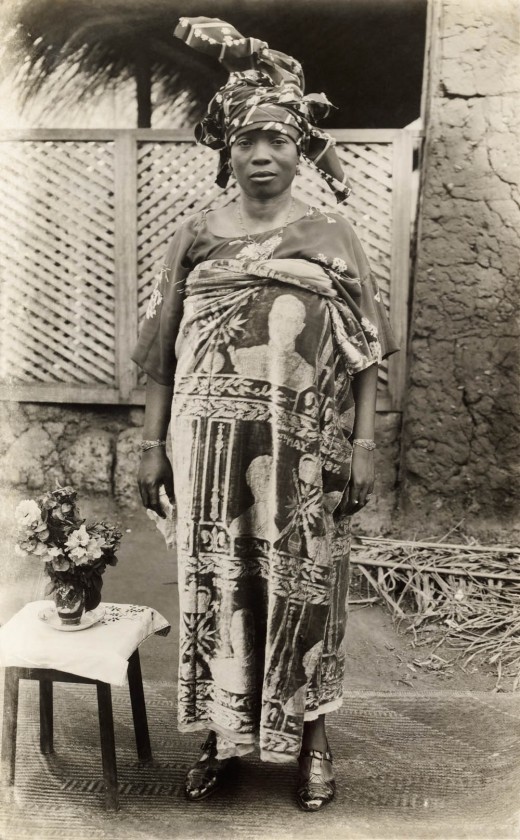
Benin City, Nigeria
EEPA 2009-007-1772
